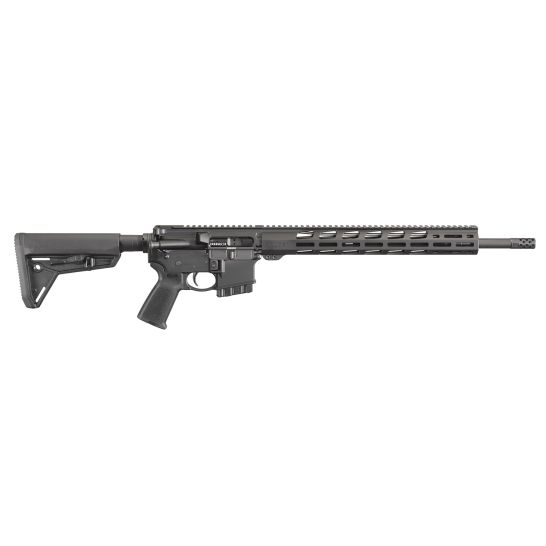Ruger AR-556 MPR 5.56 AR-15 Rifle 18″, Black – 8535 For Sale
$810.99
The Ruger AR-556 MPR 5.56 AR-15 Rifle (model 8535) in black is a high-performance and versatile firearm designed to meet the needs of firearm enthusiasts and professional users, especially in restrictive states. It includes a 10-round magazine and features a Magpul® MOE® grip and MOE SL® collapsible buttstock for ergonomic comfort and customizable length. The rifle has a 15-inch free-float handguard for enhanced accuracy and control, while precision engineering is evident in its durable mil-spec 9310 bolt. It features a smooth, crisp Ruger® Elite 452® AR-Trigger with a two-stage pull, Magpul® M-LOK® accessory slots, and a radial port Ruger® muzzle brake for reduced recoil. The cold hammer-forged 4140 chrome-moly steel barrel has a 1:8″ twist rate and a 5.56 NATO chamber, accommodating both 5.56 NATO and .223 Rem. ammunition, with M4 feed ramps for improved reliability. The rifle’s flat-top upper receiver is made from robust aerospace-grade 7075-T6 aluminum with a hard-coat anodized finish, ensuring maximum durability. It also features a rifle-length gas system for smoother operation, making it an attractive choice for any rifle enthusiast.

Reviews
There are no reviews yet.